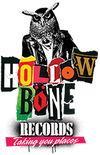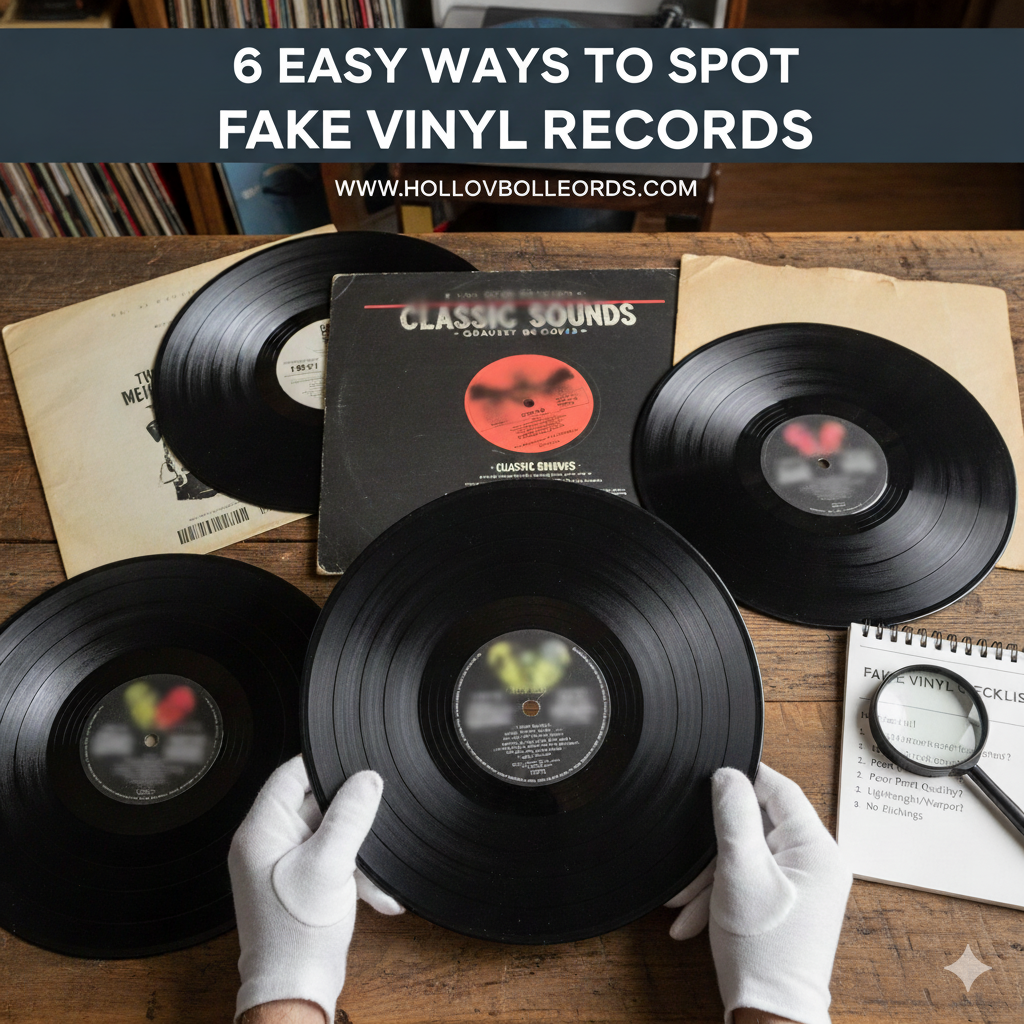6 Easy Ways to Spot Fake Vinyl Records
Vinyl records have experienced a resurgence in popularity, attracting both seasoned collectors and new enthusiasts. However, with this revival comes the unfortunate rise of counterfeit vinyls flooding the market.
These fakes not only deceive buyers but also tarnish the rich history and authenticity that vinyl represents. In this guide, we'll delve into effective methods to identify counterfeit vinyl records, helping you make informed purchasing decisions.
1. Examine the Cover Art and Packaging
-
Artwork Quality: Authentic vinyl covers typically showcase sharp, high-resolution artwork. Blurry, pixelated, or overly bright images can be indicative of a counterfeit. Additionally, check for any spelling errors or unusual fonts.
-
Material and Feel: Genuine albums often use sturdy, high-quality materials for their covers. If the cover feels flimsy or the printing appears cheap, it's a red flag.
-
Spine Text Alignment: The text on the spine should be clear and properly aligned. Misaligned or blurry text can signal a fake. (Retrolife Official Store)
2. Inspect the Vinyl Itself
-
Weight and Thickness: Original pressings are usually heavier and thicker than counterfeit records. While this isn't always a definitive test, it can be a helpful indicator.
-
Surface Quality: Check for imperfections like streaks, bumps, or warps. Counterfeit records often have poor manufacturing quality. (Vinyl Record Manufacturers Association)
-
Run-Out Groove Details: Examine the area between the last track and the label (run-out groove). Authentic records often have machine-stamped matrix numbers and engineer's stamps here. Handwritten or absent markings can indicate a counterfeit. (What Hi-Fi?)
3. Check the Label and Center Hole
-
Label Design: Original labels will have clear, sharp text and images. Look for any discrepancies in font, color, or design. Pay attention to the center label; it should be perfectly centered and not easily peelable.
-
Catalog Number: Verify the catalog number on the label. Counterfeit records often have incorrect or missing catalog numbers.
4. Assess the Sound Quality
-
Audio Clarity: Play the record and listen closely. Authentic records typically have clear and well-defined sound. Counterfeit records may have distorted, muffled, or low-quality audio.
-
Background Noise: While all vinyl records have some degree of background noise, excessive pops, clicks, or static can indicate a poor-quality pressing, often characteristic of fakes.
5. Investigate the Seller's Reputation
-
Trusted Sellers: Always consider who you're buying from. Trusted sellers with good reviews are less likely to sell fake records.
-
Seller Transparency: Be cautious if the seller has limited feedback or is unwilling to provide detailed photos. A reputable seller should be transparent about the product's condition and provenance.
6. Utilize Online Databases
-
Discogs: Use platforms like Discogs to check the catalog number and other details of the record. If the record is listed as "unofficial" or "bootleg," it's likely a counterfeit. (ipo.blog.gov.uk)
-
Comparison: Compare the suspect record with known authentic copies. Look for differences in cover art, label design, and other details. This can help identify discrepancies indicative of a fake.
Quick Takeaways
-
Always inspect the cover art for quality and accuracy.
-
Examine the vinyl for weight, thickness, and surface imperfections.
-
Check the label and center hole for authenticity markers.
-
Assess the sound quality during playback.
-
Research the seller's reputation and transparency.
-
Utilize online databases to verify catalog numbers and authenticity.
Conclusion
Spotting counterfeit vinyl records requires attention to detail and a discerning eye. By examining the cover art, vinyl quality, label details, sound performance, and the seller's credibility, you can protect yourself from purchasing fakes. At Hollow Bone Records, we pride ourselves on offering genuine, high-quality vinyl records to our customers. For a curated selection of authentic vinyl, visit our collection page. Remember, when in doubt, always research and verify before making a purchase.
FAQs
-
What is the difference between a bootleg and a counterfeit vinyl record?
A bootleg is an unauthorized recording, like live performances or unreleased tracks, while a counterfeit is a fake reproduction of an official album made to deceive buyers. (Vinyl Record Manufacturers Association)
-
How can I verify the authenticity of a vinyl record online?
Utilize online databases like Discogs to check the catalog number, matrix numbers, and other details of the record. If the record is listed as "unofficial" or "bootleg," it's likely a counterfeit. (ipo.blog.gov.uk)
-
Are colored vinyl records more likely to be counterfeit?
Not necessarily, but counterfeiters often use colored vinyl to make records seem more collectible. If a colored vinyl pressing is not listed in official databases or lacks proper documentation, it could be a fake. (What Hi-Fi?)
-
What should I do if I suspect a vinyl record is counterfeit?
Contact the seller with your concerns and request additional information or photos. If the seller is uncooperative or defensive, consider reporting the issue to the platform where the purchase was made.
-
Can counterfeit vinyl records damage my turntable?
Yes, counterfeit records are often made from low-quality materials and can have imperfections that may damage your turntable's stylus or cause excessive wear.
We Value Your Feedback
Your opinion matters to us! If you've found this guide helpful or have additional tips on spotting counterfeit vinyl records, please share your thoughts in the comments below. Don't forget to share this article with fellow vinyl enthusiasts to help them make informed purchasing decisions.
References
-
How to Spot Counterfeit Vinyl Records. VRMA Group. (Vinyl Record Manufacturers Association)
-
How to spot fake records: 10 tips to avoiding counterfeit vinyl. What Hi-Fi?. (What Hi-Fi?)
-
Spotting Pirated Vinyl Records: How To Avoid Counterfeits. ShutterGroove. (ShutterGroove)
-
Spinning lies: the rise of fake vinyl and how industry is fighting back. Intellectual Property Office. (ipo.blog.gov.uk)
-
How to identify authentic vinyl records and avoid bootlegs? Retro Life Player. (Retrolife Official Store)



